- Home
- slideshows
- miscellaneous
- I put a new lineup of guitar effects pedals from Fender to the test - here's the verdict
I put a new lineup of guitar effects pedals from Fender to the test - here's the verdict
Here I am in early 2018, getting a first crack at Fender's new effects pedals. Initial impressions were good, all the more so because Fender has never been known for its pedal game.

The initial lineup consists of six pedals, ranging from $100-$200.
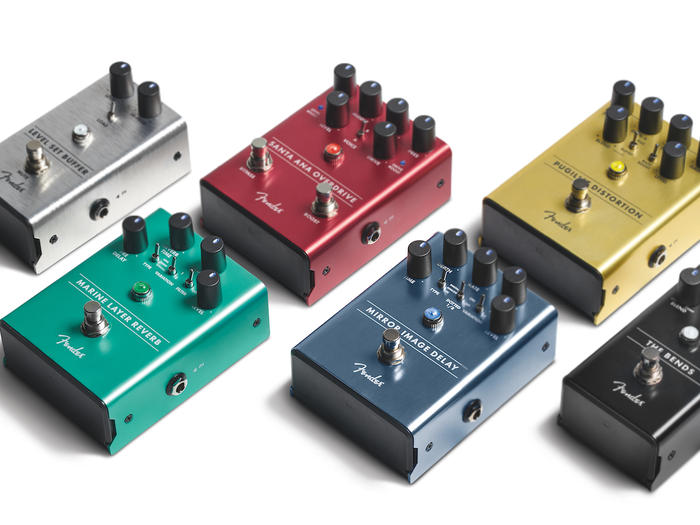
Most of the pedals were created by Fender designer and resident mad-scientist Stan Cotey. He's also a pretty skilled guitar player himself.
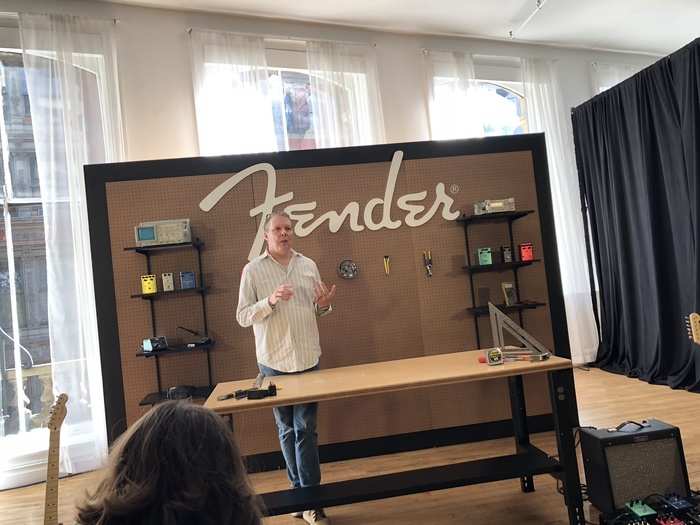
This is my current pedal situation, with the Pugilist dropped in for contrast. The footswitch on the left goes into my 50-watt Marshall DFX amp. I can switch from clean to dirty tones and turn the built-in effects on and off. The OTHER pedal is actually an old Fender in-line tuner. That's all I've got.
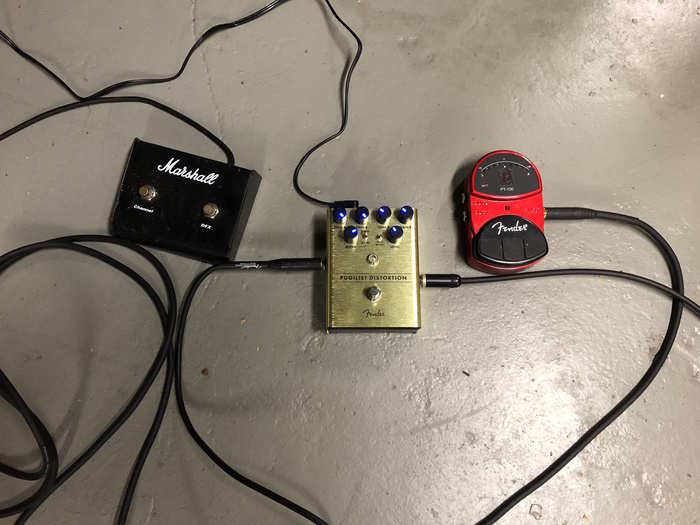
Fender loaded me a new Pro Junior IV, a 15-watt terror that's just about the most simple amp money can buy and also my favorite Fender product.
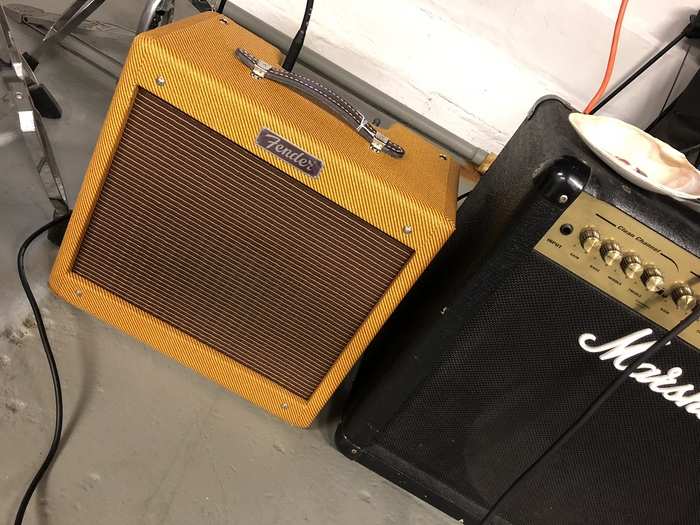
The PJ IV has an old-school tweed cover and two chicken-head knobs: one for volume and one for tone. Inside are tubes and a 10-inch Jensen speaker. The amp goes for about $500.
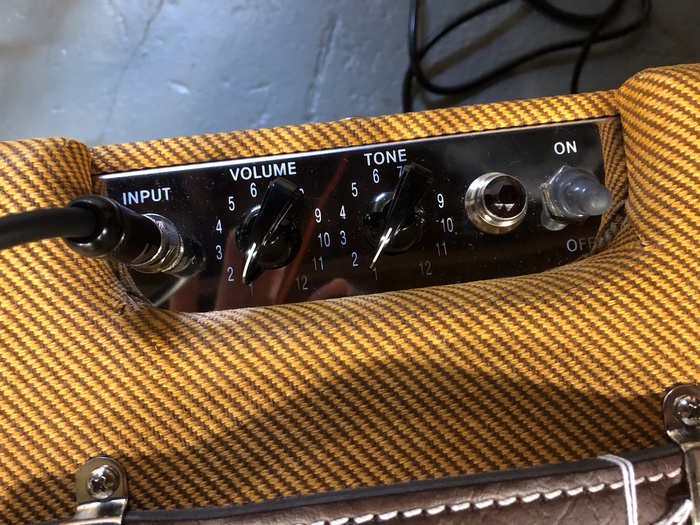
If you plug your guitar straight into the PJ IV, the general idea is to crank the amp all the way up for overdrive and distortion, using the volume and tone control on your axe to tweak the overall tone. Yes, 15 watts might not sound like much, but the PJ is a ferocious little thing and much adored by fans of a simple, straightforward rock 'n' roll approach.
Fender makes a lot of amps, both tube and digital, and they're all great — some are legendary. But the PJ is my personal favorite, and my ideal combo is Telecaster-plus-PJ.
On to the Tele. This is the new American Professional version of what was basically the first solid-body electric guitar. It's a $1,500 unit that is often thought of as the definitive country-and-western axe, but I've found that it's surprisingly versatile.
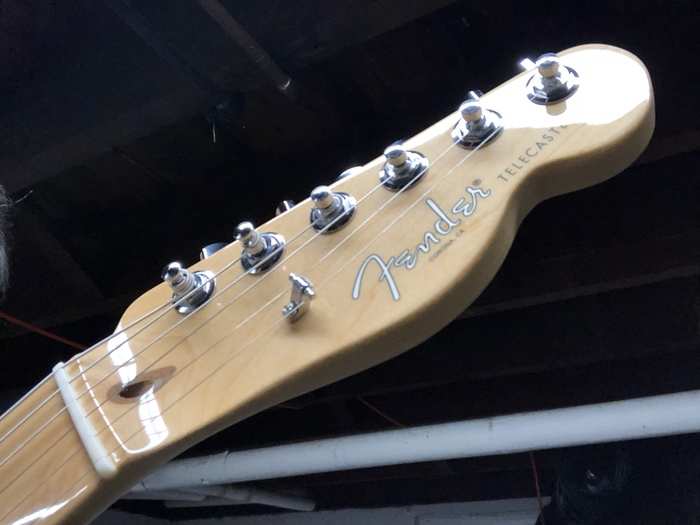
The Tele is simplicity itself: two pickups, a three-way switch, and a volume and tone knob. The American Pro takes this basic idea and imbues it with incredible quality, from the silky neck to the brass saddles and everything else in between.
The Telecaster is famous for the "twang" produced by its sharp, chunky bridge pickup. The neck pickup is mellower, and a lot of players never use it. I like to favor the bridge pickup and dial off some treble with the tone knob, which on the American Pro is very sensitive.
Typically, I then throw on some crunch with a bit of reverb and delay. On the clean side, I'll dial off more tone than for the dirty sound and alternative between the bridge and neck pickups.
For the purposes of this run-thru of Fender's pedals, I used the Tele and also my own guitar, which has a pair of humbucking pickups and is roughly analogous to a Gibson Les Paul Junior. It produces a beefier tone, and I favor its bridge pickup.
For what it's worth, I am not much of a guitar hero. When it comes to electrics, I like to chug out what's basically punk rock and fairly high volume. Telecasters get the job done when I want to translate something from acoustic guitar.
First up, the Pugilist.
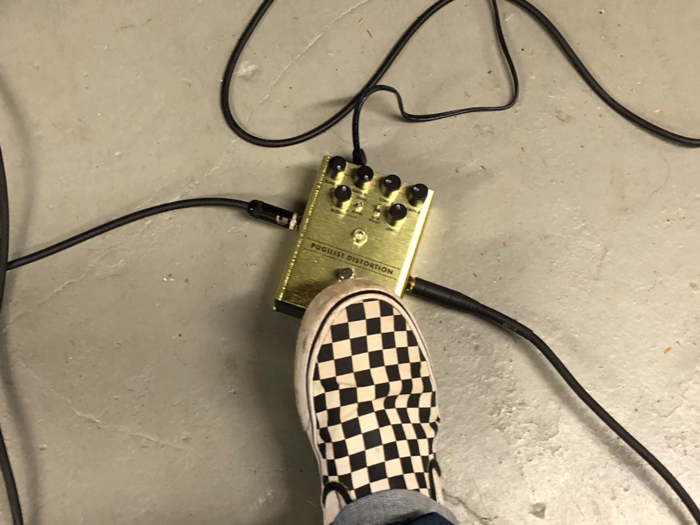
Here's how I checked out the pedals. I set the volume and tone on the PJ at anywhere from 3 to 6. Fender has designed the pedals to run off a power supply or a 9-volt battery (there's a nifty magnetic hatch if you want to go battery, and some players prefer that). I used my power supply.
I didn't chain the pedals, figuring that I could assess each better in isolation and cut down on some variables.
Both the Pugilist and the Santa Ana are affordable, but also feature-packed. For $99, the Pugilist has a lot going on, and barely scratched the surface. At a basic level, the pedal provides distortion without having to crack the amp up to a painfully loud volume.
There's always come confusion around the difference between distortion and overdrive, largely because the earliest dirty tones came from tube amps that were overdriven to the point where higher volume cause the signal to break up from its clean nature. The first overdrive pedals sought to provide that effect without having to push the amp to an uncomfortably maxed-out point.
I like to think of distortion pedals as "pre-packaging" types of of overdriven breakup. So instead of cranking, for example, the PJ and turning my guitar's volume all the way up to achieve the natural distortion of the amp, a distortion pedal creates dirt from the get-go. Some distortion pedals are one-trick ponies, while others are more versatile. The Pugilist falls into the latter camp.
Now, the Santa Ana Overdrive.
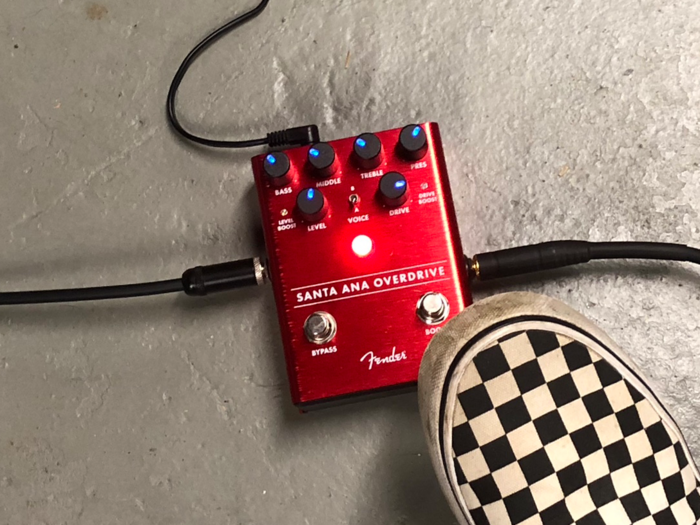
I'm really not worthy of this pedal, which sucked me into hours of hypnotic experimentation with its numerous features. Ultimately, I went with a sort of blunt-instrument approach and sought a high level of crunch while dialing back the volume on the amp and keeping it cranked on the Telecaster. The result was delicious.
The pedal has two "voices" — overdriven USA-style, aka cranked Fender; and something more akin to a pushed Marshall. It also has a boost feature, bifurcated for level and drive, so you can jack up the intensity of the drive or simple increase the volume without affecting the tone.
I favored boosted drive, but I extensive fiddled with the other options, twiddling the equalizer knobs all the while, and found myself in a labyrinth of sounds. My sense is that this might wind up being Fender's most successful pedal in the range. And there's no question that it gets along supremely well with the no-frills PJ IV.
Finally, the Marine Layer Reverb pedal.
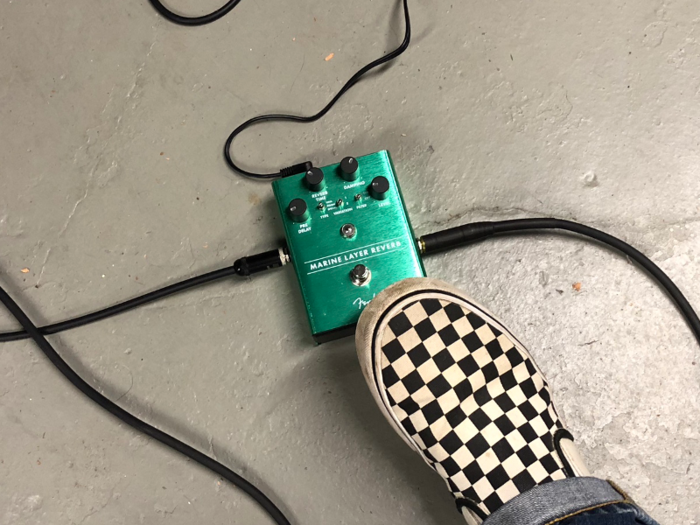
I don't like a lot of reverb, so some of the charms of the Marine Layer were lost on me. However, because the PJ IV has no built-in reverb, it needs a bit of something to warm it up, especially when one is on the bridge pickup of the Tele with the volume up and the tone set toward ice-pick mode.
You have three types of reverb to choose from: Room, Hall, and Special, which provides a kind of oscillating quiver. I favored room. You can also tweak the three options to give different flavors of each, sort of enlarging or reducing the virtual size of the reverb space. I liked setting 2 for the most part. And two-setting filter switch allows for a sharper and mellower reverb across the board.
The Special option gets one into cosmic shoegazer territory, not my thing, but fun to mess around with. It was amusing the turn the PJ into a dreamy, ambient amp, when what I normally induced from it is a total garage-rock tone.
So what's the verdict?

Reviewers of the new Fender pedals have been uniformly impressed, and I'm no exception. It would be no stretch for me to buy a PJ IV, a Tele, a Pugilist, and a Marine Layer, and call it a day with an all-Fender rig.
More pedal-obsessed players might value specifics features of the Fender units and add them to their pedal boards. There's no doubt that the new lineup is priced right, and in particular the Santa Ana Overdrive seems like an insane bargain at $200, given its capabilities.
The pedal market is pretty weird. There are big names like Boss, selling numerous pedals that have been showing up boards for decades, along with other guys such as MXR. Then there are boutique pedals, which appeal to the true effects junkies, or to those folks who just obsess over a particular type of distortion or overdrive.
The three pedals I sampled are truly sweetspot stompboxes for Fender, designed to be interesting enough to stand out, but not so focused that a player would get bored with the effect and move on.
My favorite was the Pugilist, but that's because all I need is a clean tone and a dirty tone, and with an amp like the PJ that doesn't allow for switching, a good distortion pedal is my ticket. At $150, the Marine Layer Reverb is priced right, but I wouldn't end up using much of what it has to offer. In fact, I didn't even chain it in with the Pugilist because I didn't really feel like I needed any reverb to achieve a tone that I liked.
The pedals are solidly built, and they have cool features, such as a Fender jewel light and dials that can be illuminated — all to assist gigging musicians on stage. I stomped all three of the pedals I checked out and I stomped 'em good, and they held up beautifully and showed no indications of failing. If you put them on a board, they're likely to return the investment as far as durability goes.
For Fender, the move into pedals is bold and serious. And the products live up to the ambitions of this legendary company.
Popular Right Now
Popular Keywords
Advertisement